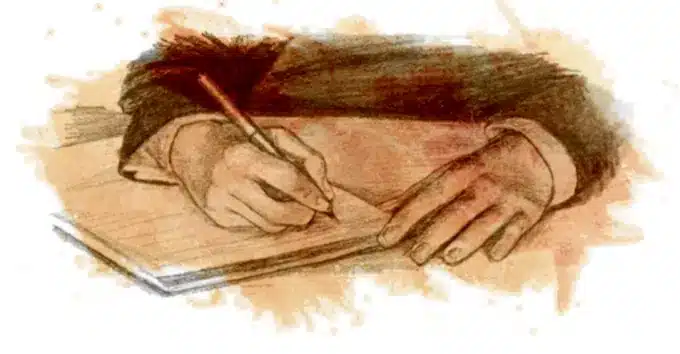Are you ready to embark on an epic adventure in the world of Dungeons & Dragons (D&D)? The first step to creating a memorable and engaging character is to make a character sheet. This essential tool will help you bring your character to life, keeping track of their abilities, skills, and backstory. In this article, we’ll guide you through the process of making a character sheet that will impress both new and seasoned Dungeon Masters (DMs).
What is a Character Sheet?
A character sheet is a detailed record of your D&D character. It includes all the essential information about your character’s abilities, skills, equipment, and backstory. Think of it as your character’s resume, detailing their strengths, weaknesses, and unique traits.
Gathering Your Supplies
Before you start filling out your character sheet, you’ll need a few supplies:
- A blank character sheet: You can find these online or in the back of the Player’s Handbook.
- Pencil and eraser: You’ll be making changes as you go.
- Player’s Handbook: This is your primary resource for creating your character.
Understanding the Basics

To create a character sheet, you need to understand the core elements that make up a D&D character. These include:
- Race: The species of your character, such as elf, dwarf, or human.
- Class: Your character’s profession or role, like wizard, fighter, or rogue.
- Abilities: The six core stats that define your character’s physical and mental capabilities: Strength, Dexterity, Constitution, Intelligence, Wisdom, and Charisma.
- Skills and Feats: Special abilities and talents your character possesses.
- Backstory: The history and personality of your character.
- Equipment and Inventory: The items and gear your character carries.
- Spells and Abilities: Magical powers and special skills your character can use.
Choosing a Race
Your character’s race determines their physical appearance, lifespan, and inherent abilities. Each race offers unique traits that can influence your character’s strengths and weaknesses. For example:
- Elves: Known for their agility and keen senses.
- Dwarves: Resilient and hardy, with a strong connection to the earth.
- Humans: Versatile and adaptable, with no particular strengths or weaknesses.
Picking a Class
Your character’s class defines their role in the game and their primary abilities. Each class offers a different playstyle and set of skills. Some popular classes include:
- Wizard: Masters of arcane magic, able to cast powerful spells.
- Fighter: Skilled in combat and physical prowess.
- Rogue: Experts in stealth, dexterity, and deception.
Determining Abilities
Abilities are the core stats that define your character’s physical and mental capabilities. There are six abilities in D&D:
- Strength (STR): Physical power and carrying capacity.
- Dexterity (DEX): Agility, reflexes, and balance.
- Constitution (CON): Endurance and health.
- Intelligence (INT): Knowledge and reasoning.
- Wisdom (WIS): Perception and insight.
- Charisma (CHA): Persuasiveness and social skills.
You’ll typically roll dice to determine these stats, or you can use a standard array or point-buy system.
Selecting Skills and Feats
Skills are specific areas where your character excels, such as stealth, athletics, or arcana. Feats are special abilities that provide unique benefits. As you level up, you’ll have the opportunity to choose new skills and feats that enhance your character’s abilities.
Creating a Backstory

A compelling backstory adds depth to your character and can influence their motivations and personality. Consider questions like:
- Where is your character from?
- What are their goals and aspirations?
- Do they have any significant relationships or rivalries?
Equipment and Inventory
Your character’s equipment and inventory include all the items and gear they carry. This can range from weapons and armor to magical items and potions. Keep track of your character’s starting equipment based on their class and background.
Spells and Abilities
If your character can cast spells, you’ll need to keep track of their spells known, spell slots, and spellcasting ability. Different classes have different spellcasting rules, so refer to the Player’s Handbook for details.
Filling Out the Character Sheet
Now that you have all the necessary information, it’s time to fill out your character sheet. Here’s a step-by-step guide:
- Basic Information: Start with your character’s name, race, class, and level.
- Abilities: Record your character’s ability scores and modifiers.
- Skills and Feats: List your character’s skills and any feats they’ve chosen.
- Backstory: Write a brief summary of your character’s history and personality.
- Equipment: Note your character’s starting equipment and inventory.
- Spells: If applicable, list your character’s spells and spell slots.
Final Touches
Review your character sheet to ensure all the information is accurate and complete. Make any necessary adjustments and add any final details that will help bring your character to life.
Tips for New Players
Creating a character sheet can be overwhelming for new players. Here are some tips to make the process easier:
- Start Simple: Choose a race and class that are straightforward to play.
- Ask for Help: Don’t be afraid to ask your DM or fellow players for assistance.
- Have Fun: Remember that D&D is a game, and the goal is to have fun and tell a great story.
Conclusion
Making a character sheet for D&D is a rewarding process that sets the stage for your adventures. By following these steps, you’ll create a character that’s ready to take on any challenge the game throws at them. Whether you’re a new player or a seasoned veteran, a well-crafted character sheet is essential for a great D&D experience.
FAQs
1. What is a character sheet in D&D?
A character sheet is a document that records all the essential information about your D&D character, including their abilities, skills, equipment, and backstory.
2. How do I choose a race for my character?
Consider the strengths and weaknesses of each race and how they align with your character’s desired abilities and role.
3. What is the best way to determine my character’s abilities?
You can roll dice, use a standard array, or a point-buy system to determine your character’s ability scores.
4. How important is a backstory for my character?
A backstory adds depth and personality to your character, influencing their motivations and interactions within the game.
5. Can I change my character sheet after I’ve started playing?
Yes, you can make adjustments to your character sheet as you level up or as the game evolves, with your DM’s approval.


